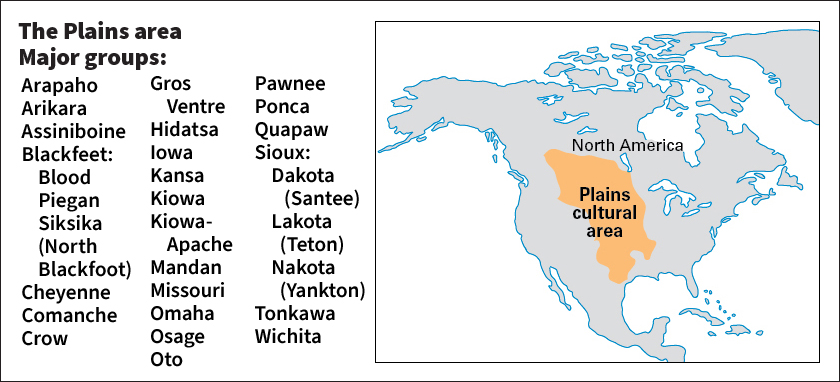Pawnee << paw NEE >> are a Native American tribe that lives largely in the Pawnee, Oklahoma, area. According to the 2020 United States census, there are about 2,300 Pawnee.

The Pawnee once lived in what is now Nebraska. Most of the year they lived in villages and raised corn, beans, and squash. The villages consisted of 10 to 12 large, round, earth-covered houses. The Pawnee left their villages once or twice a year to hunt buffalo on the plains. During the hunting season, they lived in tipis made of buffalo skins. Pawnee men shaved their heads except for a small scalp lock. They stiffened the scalp lock with grease and paint so that it stood up like a horn.
Religion played an important role in Pawnee life. The Pawnee regarded corn as a sacred gift, and many of their religious ceremonies centered around corn. Other ceremonies involved buffalo hunting and war. One Pawnee ceremony involved human sacrifice. But in 1838, opposition from within the tribe ended the practice.
A treaty signed in 1857 between the Pawnee and the United States restricted the tribe to a reservation along the Loup River in Nebraska. In 1875, because of pressure from white settlers and attacks by other tribes, the Pawnee moved to the Indian Territory (now Oklahoma).
Today, the Pawnee are governed by two groups. The Pawnee Tribal Business Council handles the tribe’s business and financial matters. Any council action regarding tribal membership or treaties is subject to approval by the Nasharo (Chiefs) Council.
